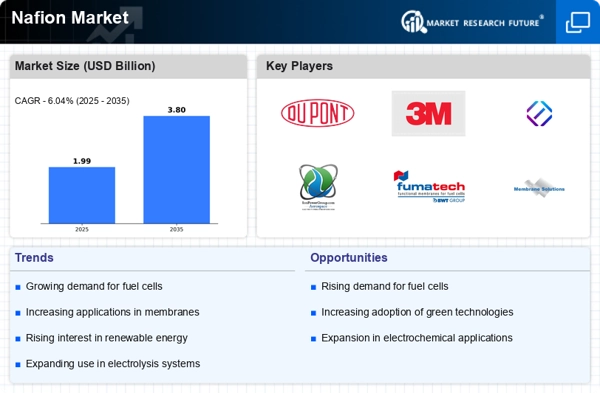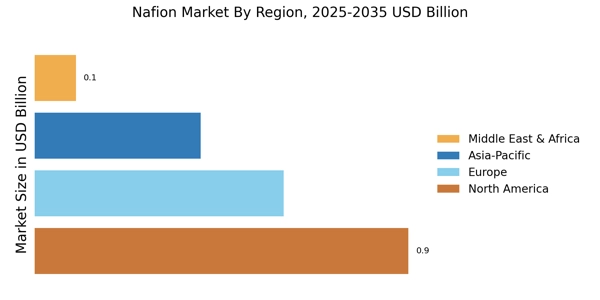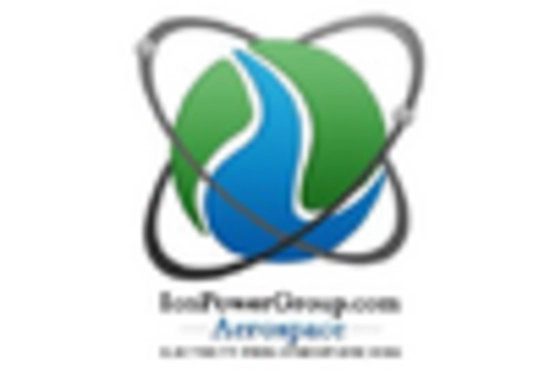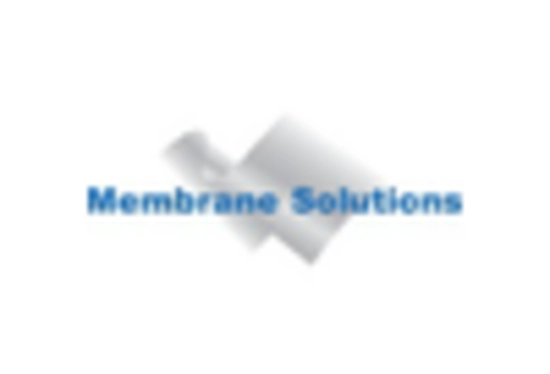Growth in the Automotive Sector
The automotive sector's shift towards electrification is a substantial driver for the Nafion Market. As electric vehicles (EVs) gain traction, the demand for fuel cell electric vehicles (FCEVs) is also increasing. Nafion Market membranes are critical components in FCEVs, enabling efficient energy conversion and storage. The automotive fuel cell market is anticipated to witness a growth rate of approximately 25% annually, reflecting the industry's commitment to sustainable transportation solutions. This growth in the automotive sector is likely to create new opportunities for Nafion Market manufacturers, further enhancing the Nafion Market.
Rising Interest in Hydrogen Economy
The burgeoning interest in the hydrogen economy is emerging as a significant driver for the Nafion Market. As countries explore hydrogen as a clean energy carrier, the demand for Nafion Market membranes, which facilitate hydrogen production and utilization, is expected to surge. The hydrogen market is projected to reach over 200 billion USD by 2030, driven by applications in energy storage, transportation, and industrial processes. This rising interest in hydrogen technologies is likely to stimulate growth in the Nafion Market, as companies seek to develop innovative solutions that leverage Nafion Market's unique properties.
Increasing Adoption of Renewable Energy Sources
The transition towards renewable energy sources is a pivotal driver in the Nafion Market. As nations strive to reduce carbon emissions, the demand for efficient energy storage and conversion technologies rises. Nafion Market, known for its proton exchange membrane properties, plays a crucial role in fuel cells and electrolyzers, which are essential for harnessing renewable energy. The market for fuel cells is projected to reach approximately 30 billion USD by 2030, indicating a robust growth trajectory. This increasing adoption of renewable energy technologies is likely to propel the Nafion Market, as manufacturers seek high-performance materials to enhance energy efficiency and sustainability.
Regulatory Support for Clean Energy Technologies
Regulatory frameworks promoting clean energy technologies are a key driver for the Nafion Market. Governments worldwide are implementing policies and incentives to encourage the adoption of hydrogen fuel cells and other clean energy solutions. For instance, initiatives aimed at reducing greenhouse gas emissions are likely to increase the demand for Nafion Market membranes, which are essential for efficient fuel cell operation. The market for hydrogen fuel cells is projected to expand significantly, with estimates suggesting a market size of over 10 billion USD by 2025. This regulatory support is expected to bolster the Nafion Market, as manufacturers align their products with evolving energy standards.
Technological Innovations in Fuel Cell Applications
Technological advancements in fuel cell applications are significantly influencing the Nafion Market. Innovations in design and materials are enhancing the performance and durability of fuel cells, which are increasingly utilized in transportation and stationary power generation. The Nafion Market is expected to grow at a compound annual growth rate of around 20% over the next five years. Nafion Market membranes are integral to these advancements, providing superior ionic conductivity and chemical stability. As industries adopt more sophisticated fuel cell technologies, the demand for Nafion Market is anticipated to rise, thereby driving growth in the Nafion Market.


















Leave a Comment